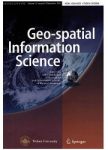版权所有:内蒙古大学图书馆 技术提供:维普资讯• 智图
内蒙古自治区呼和浩特市赛罕区大学西街235号 邮编: 010021

作者机构:Department of Physical Geography and Ecosystem ScienceLund UniversityLundSweden Center for Geographic Information System and Remote SensingCollege of Science and TechnologyUniversity of RwandaKigaliRwanda Department of GISSurvey and PlanningVellinge kommunSkåneSweden Department of Physical Geography and Ecosystem ScienceLund UniversityLundSweden Department of Physical Geography and Ecosystem ScienceLund UniversityLundSweden Center for Advanced Middle Eastern StudiesLund UniversityLundSweden
出 版 物:《地球空间信息科学学报(英文版)》 (Geospatial Information Science)
年 卷 期:2024年第27卷第4期
页 面:968-982页
核心收录:
基 金:the Styrelsen for Internationellt Utvecklingssamarbete
主 题:Multi-objective land-use allocation spatial optimization sustainable urban planning Non-dominated Sorting Biogeography-Based Optimization(NSBBO)algorithm
摘 要:With the continuous increase of rapid urbanization and population growth,sustainable urban land-use planning is becoming a more complex and challenging task for urban planners and ***-objective land-use allocation can be regarded as a complex spatial optimization problem that aims to achieve the possible trade-offs among multiple and con-flicting *** paper proposes an improved Non-dominated Sorting Biogeography-Based Optimization(NSBBO)algorithm for solving the multi-objective land-use allocation problem,in which maximum accessibility,maximum compactness,and maximum spatial integration were formulated as spatial objectives;and space syntax analysis was used to analyze the potential movement patterns in the new urban planning area of the city of Kigali,*** Non-dominated Sorting(ENS)algorithm and crossover operator were integrated into classical NSBBO to improve the quality of non-dominated solutions,and local search ability,and to accelerate the convergence speed of the *** results showed that the proposed NSBBO exhibited good optimal solutions with a high hypervolume index compared to the classical ***,the proposed algorithm could generate optimal land use scenarios according to the preferred objectives,thus having the potential to support the decision-making of urban planners and stockholders in revising and updating the existing detailed master plan of land use.